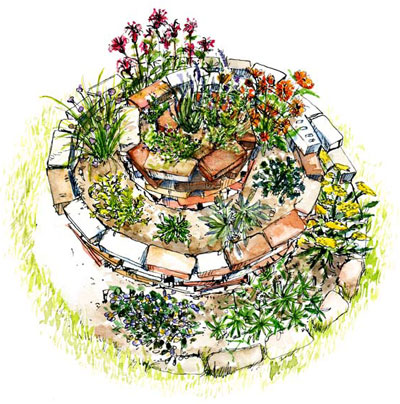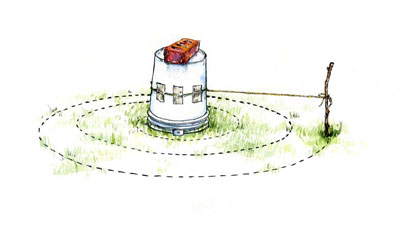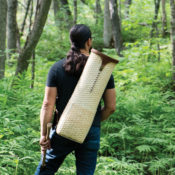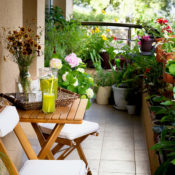From the shape of the nautilus shell to the arrangement of seeds in the heart of a sunflower, the spiral form is much used in nature. Gardeners can take advantage of this natural shape to create optimal growing conditions for herbs of all kinds.
Some Like It Hot
In an herb spiral, climate varies from arid Mediterranean at the top to moist and subtropical at its base. Heat-loving herbs, such as rosemary, thyme, oregano, marjoram, and sage, bask in the dry, sunny upper region that is 2 or
3 feet above ground. Bricks or stones placed along the spiral capture the noonday heat, storing it to keep herbs toasty at night. In a “trickle-down” effect, water drains down into the lower levels, leaving the arid-loving plants high and dry, while the middle and lower levels stay progressively more moist. The varied environments provide an ideal growing medium for tansies, chives, garlic, parsley, and chamomile in the middle level, and lemon balm, coriander, and moisture-loving mints at the base. Some gardeners place a small pond at the lowest level for watercress and other water plants.
An Upward Spiral
Start with a sunny spot in your yard or garden within an accessible range of your kitchen. Clear an area about 6 feet in diameter. (If grass is present, use a spade to remove any sod.)
Find the middle of the plot, then drive in a stake. Using a 2 ½-foot string with a loop placed around the stake, mark out the desired diameter of your circle with a pointed stick or screwdriver.
Using bricks or rock, lay out the spiral either from the center out or from the outside in. Position the bottom end of the spiral on the south side. You can “eyeball” the spiral, but for more accuracy, place a two-gallon plastic pail upside down in the center. Tie a 4-foot string around the base of the pail and secure with duct tape. Place a weight on top of the bucket, then measure out the desired radius. Hold a pointed stick or screwdriver at that point on the string and mark the ground as you go around the pail. Keep the line taut. You will end up at the pail with a nice spiral.
Build the spiral until it is 2 to 3 feet high at its top. Fill the middle with stones, sand, or brick pieces, leaving about 8 inches at the top to fill with soil. Mediterranean herbs that will thrive at the top level prefer poor soil. As you descend the spiral, add more compost for herbs planted in the middle and base.
Consider the growing habits of each herb when planting. Shade-tolerant plants will grow best on the east, west, and north sides of the spiral. Rosemary can become large, so place it at the top. Creeping plants such marjoram and thyme may be planted so they can cascade over the edge. Situate herbs from 1 to 2 feet apart. To fill gaps, plant parsley, kale, calendula, or nasturtium throughout your spiral.
Become a Saturday Evening Post member and enjoy unlimited access. Subscribe now




